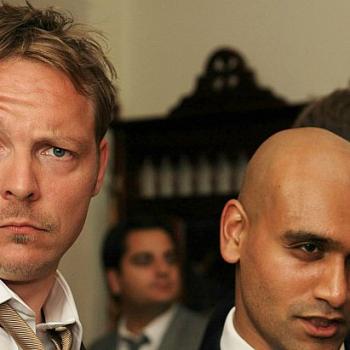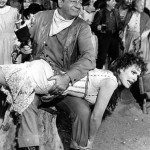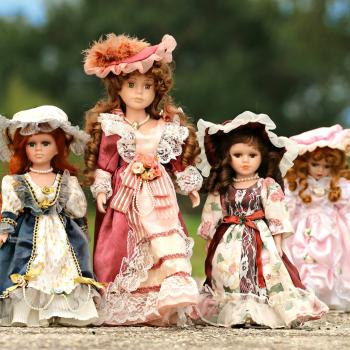“Mommy, what’s this?”
In her hand Sally held a condom, still in its wrapper. Sean had cleaned out his desk earlier in the day, and it had somehow ended up on the floor, a leftover from last summer between when Bobby was born and when I had my IUD put in. I could have just brushed the question off with a non-answer—Sally’s only in preschool, by the way—but I decided against that. Instead, I pulled out my copy of Our Bodies Ourselves and showed Sally diagrams of the female reproductive system. Some of this was stuff I’d told her before, but some of it was new.
I told Sally that women’s ovaries release eggs, and men’s testicles make sperm. I showed her anatomy illustrations of both. I told her that when an egg and a sperm come together, they make a seed called a zygote. I showed her pictures, pulling them up on the internet. I told her that this seed then implants in a woman’s uterus and grows into a baby. I showed her pictures of fetal development, moving from one stage to the next.
I told Sally how the sperm gets to the egg. I told her that an egg is released each month from the ovaries and showed her the path it follows. I told her that when a man and a woman have sex—which is something grownups do—the man puts his penis in the woman’s vagina, and that sperm come out through his penis and go into her vagina, and up into her uterus. I traced the sperm’s path, and showed her where the sperm and the egg find each other to become a zygote.
I told Sally that sometimes people want to have sex just because it feels good, and they don’t want to grow a baby. I told her that in this case, they have to find a way to keep the sperm and the egg from finding each other. I told her that condoms were one way to do that. I told her that the condom goes over a man’s penis, and that way when the sperm come out of the penis it blocks them so they can’t get inside the woman, and can’t find the egg. I told her that Sean and I didn’t need to use condoms anymore, because I had an IUD. I found a picture of an IUD, and a picture of an illustration of an IUD in a woman’s uterus.
I told Sally that sometimes attempts to keep the sperm from getting to an egg don’t work, and they get together anyway, and form a zygote, a seed that will implant in the uterus and start growing into a baby. I told her that if this happens but a woman doesn’t want a baby, she can have an abortion, and I found an illustration in Our Bodies, Ourselves to show her. I told her that an abortion is where a doctor removes the seed so it won’t keep growing into a baby.
And then finally, after all of this, I paused. Sally had listened raptly, searching the pages of Our Bodies, Ourselves for more pictures—but she had said little. And now, finally, she spoke.
“Mommy, there’s just one problem.” She looked concerned.
A problem? What was this problem that had her so worried? Was she going to tell me that this whole thing was disgusting? Was she going to ask why someone would ever not want a baby? Was she going to tell me that the entire concept of abortion was horrifying? (Someone once told me that every young child would be repulsed on learning what abortion was, since they would make the connections between themselves and aborted pregnancies.) Wondering what it was Sally found so concerning about this whole discussion, I turned to look right in her eyes and give her my full attention.
“The sperms could get over the top of your IUD!” she announced, her voice full of concern. “And they want to get to the egg, and they could do it!”
And this is when I realized that while I’d explained barrier methods of contraception, I hadn’t explained hormonal methods. And so I did—I told Sally that my IUD has hormones that make it so that a woman’s body doesn’t release any eggs, so that when the sperm come in there are no eggs for them to find. I told her that other methods of contraception have hormones too, such as pills and shots and implants. And that seemed to satisfy her concern. And once we finished, her curiosity over the condom she’d found sated with honest answers, she brought me a storybook to read and we closed the door on the subject—at least for now.
Sally learned a lot that day, and so did I. I learned that even preschoolers aren’t too young to understand contraception.














